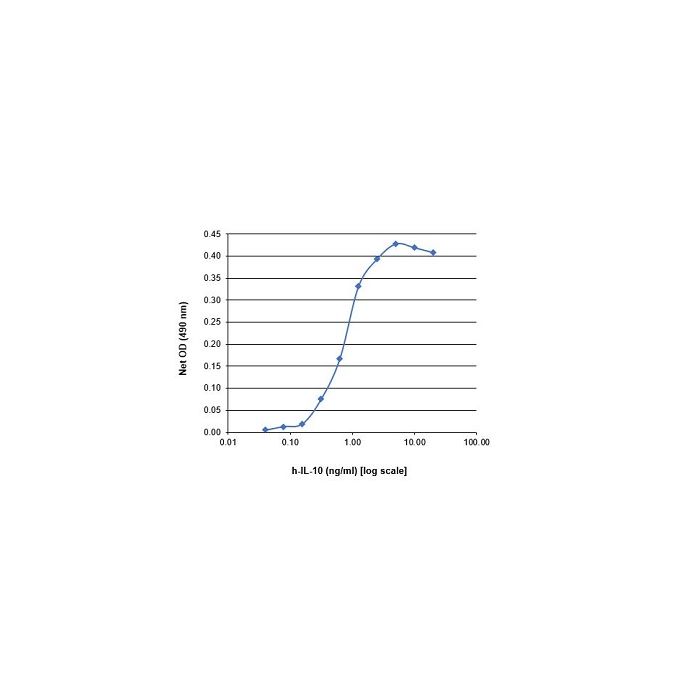Cookie Policy: This site uses cookies to improve your experience. You can find out more about our use of cookies in our Privacy Policy. By continuing to browse this site you agree to our use of cookies.
Chimerigen
IL-10 (human):Fc (human) (rec.) (non-lytic)

| Product Details | |
|---|---|
| Synonyms | Interleukin-10; Cytokine Synthesis Inhibitory Factor; CSIF |
| Product Type | Protein |
| Properties | |
| Source/Host | CHO cells |
| Sequence |
The extracellular domain of human IL-10 (aa 19-178) is fused to the N-terminus of the Fc region of a mutant human IgG1. |
| Crossreactivity | Human |
| Biological Activity |
Shows the biological function of the IL-10 moiety and exerts a prolonged circulating half-life caused by the modified Fc domain. |
| Purity | ≥98% (SDS-PAGE) |
| Endotoxin Content | <0.06EU/μg protein (LAL test; Lonza). |
| Reconstitution |
Reconstitute 10µg vial in 100µl sterile water. Reconstitute 50µg vial in 50µl sterile water. Add 1X PBS to the desired protein concentration. |
| Formulation | Lyophilized from 0.2μm-filtered solution in PBS. |
| Protein Negative Control | |
| Other Product Data |
Non-lytic: Acts as a long lasting fusion protein which only binds to the receptor. Mutations to the complement (C1q) and FcgR I binding sites of the IgGs Fc fragment render the fusion proteins incapable of antibody directed cytotoxicity (ADCC) and complement directed cytotoxicity (CDC). |
| Declaration | Manufactured by Chimerigen. |
| Shipping and Handling | |
| Shipping | BLUE ICE |
| Short Term Storage | +4°C |
| Long Term Storage | -20°C |
| Handling Advice |
Avoid freeze/thaw cycles. Centrifuge lyophilized vial before opening and reconstitution. |
| Use/Stability |
Stable for at least 1 year after receipt when stored at -20°C. Working aliquots are stable for up to 3 months when stored at -20°C. |
| Documents | |
| Product Specification Sheet | |
| Datasheet |
 Download PDF Download PDF |
Interleukin-10 (IL-10) is a cytokine produced by activated Th2 cells, B cells, keratinocytes and monocytes/macrophages. In vitro murine and human IL-10 inhibits cytokine synthesis by Th1 cells, natural killer cells and monocytes/macrophages. Several studies have suggested the potential application of IL-10 as an anti-inflammatory agent in the treatment of septic shock and as an immunosuppressive agent in certain T cell mediated autoimmune diseases.
- Administration of noncytolytic IL-10/Fc in murine models of lipopolysaccharide-induced septic shock and allogeneic islet transplantation: X.X. Zheng, et al.; J. Immunol. 154, 5590 (1995)






